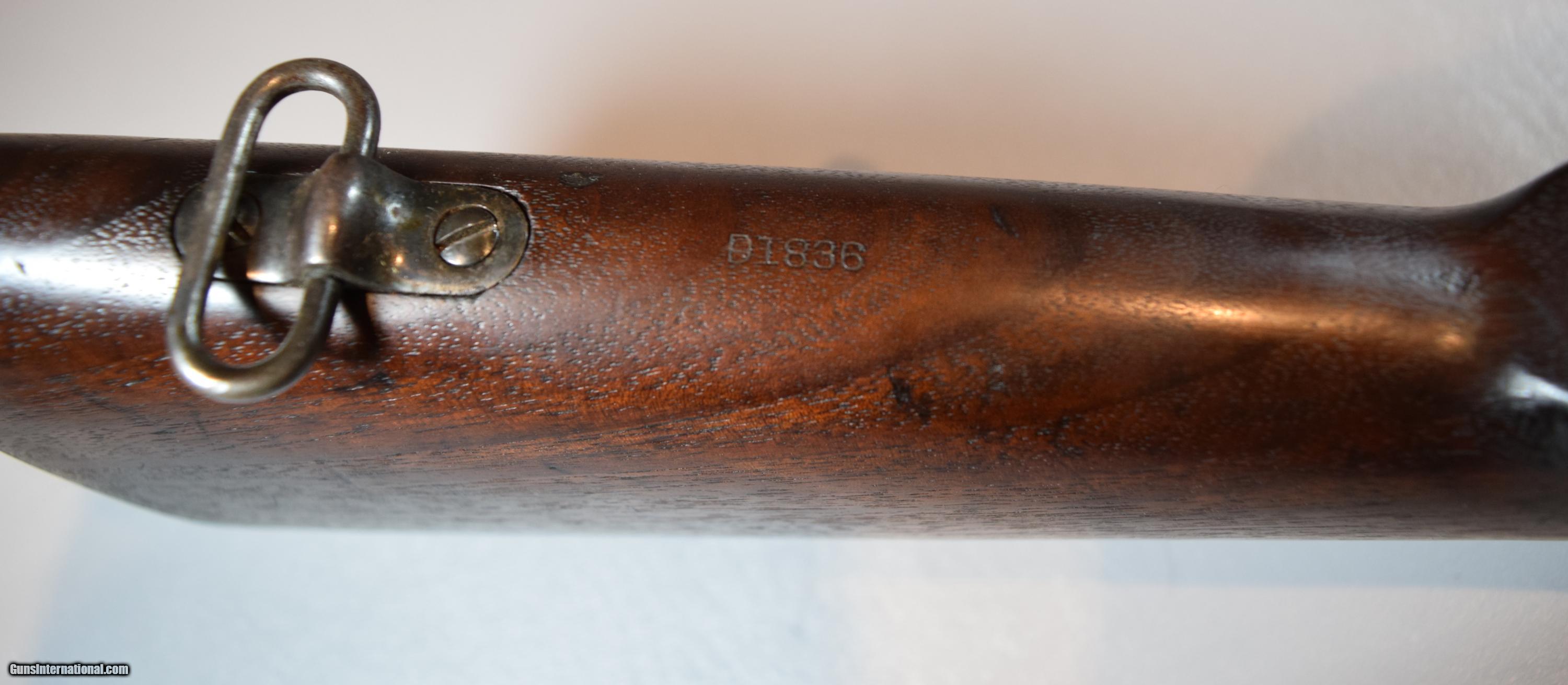
All existing rifles were re-chambered and re-sighted for the new cartridge. A new cartridge, propelling a 150gr spitzer bullet at 2,700 ft/s (820 m/s) with improved propellant and redesigned case was approved in 1906, becoming the ubiquitous. 30-'03 cartridge was also troublesome the bullet caused excessive wear on the rifling, and the round-nosed bullet was aerodynamically inefficient. A conventional blade-type bayonet, the M1905, replaced it and all rifles already produced were retrofitted for the new bayonet. In 1905, with 80,000 rifles aready produced, then-US President Theodore Roosevelt ordered the spike bayonet redesigned he believed it was too flimsy for combat. 30, Model 1903.Īlmost immediately it underwent two important modifications. A spike-type bayonet with storage in the forend of the stock was added to the design, and the new design was officially adopted as the United States Rifle, Caliber. This "short rifle" also eliminated the need of a shorter carbine for mounted troops or cavalry. The design was unsuccessful, however, and returned to the drawing board for further improvements.įollowing then-current trends in service rifles, the barrel was shortened to 24" after it was discovered that a longer barrel offered no appreciable ballistic advantage, and the shorter barrel was lighter and easier to handle. 30 caliber cartridge, which propelled a 220gr round-nosed bullet at 2,300ft/s. The bolt handle was also bent downwards, to make operation of the bolt faster. Taking a cue from the Gewehr 98, a large safety lug was added to the side of the bolt behind the extractor, which would engage the receiver bridge and prevent the bolt moving rearwards. The new M1901 prototype combined the cock-on-opening bolt, 30" barrel, magazine cutoff, stock and sights of the Krag-Jørgensen with the dual locking lugs, external claw extractor, and staggered-column magazine of the 1893 Mauser. This design was rejected, and a new design combining features of the 1898 Krag rifle and the 1893 Spanish Mauser was developed. A prototype rifle was produced in 1900 interestingly, it was very similar to Rifle No.5, the final M1892 Mauser prototype in the US Army rifle trials of 1892.

Thousands of M1893 rifles - surrendered by Spanish troops in Cuba - were returned to the US and extensively studied at Springfield Armory, where it was decided that the Mauser was the superior design. It was decided that an entirely new rifle was needed. 30-40 cartridge was developed in 1899, but generated too much chamber pressure for the rifle to withstand repeated firings. soldiers, which made them easy targets for Spanish marksmen.Ī more powerful. Another notable advantage of the Mauser was the smokeless powder used in the cartridges, which made their wielders extremely hard to spot, in sharp contrast to the puffs of smoke produced by the Spencer 1860 Carbines used by some of the U.S.

This gave the Spanish a decisive advantage in rate-of-fire. 30-06, Model 1903, is an American five-round magazine-fed, bolt-action service repeating rifle, used primarily during the first half of the 20th century. 30-40 Krag made the Spanish rifle more accurate, and the Mauser design allowed for immediate reloading of the entire magazine via stripper clips, whereas the Krag could only be loaded singly. The M1903 Springfield, officially the United States Rifle, Caliber. The high-velocity and flat trajectory of the 7x57mm cartridge compared to the.

Kreuznach No.During the Spanish-American War, US Army troops in Cuba found their Krag-Jørgensen rifles severely outmatched by the Spanish Army's M1893 Mauser rifle. Image 38 Lens SUPER ANGULON 1:8 / 65 mm Schn. Image 37 Lens TELE-XENAR 1:5.5 / 180 mm Schn. Image 36 Lens ANGULON 1:6.8 / 65 mm Schneider Kreuznach No. Image 35 Lens APO-LANTHAR 1:4.5 / 10.5 cm Voigtländer Braunschweig Image 26-27aĜamera with roll film cassette

Image 23-25 Roll film cartridge "Rollex 6 x 9" for films 120 in the format 6 x 9 cm Image 22 5 pieces Plan film double cassettes 6.5 x 9 cm Image 21 Camera with inserted double cassette Image 20 1 of 5 plan double cassette 6.5 x 9 cm Image 17-19 Focusing screens - rear part of landscape and portrait Image 14-16 Rotating/convertible/detachable rear part of the focusing screens Image 12-13 Viewfinder eyepiece/eyecup (rubber) with distance display Image 09-11 Viewfinder masks for 180 mm lens, and for 65 mm - 105 mm Image 06-07 Running floor- and back section adjustable Body function properly, shutter should be cleaned. Accessories - see list, all in leather bag (not original).
#M1903a1 unertl professional#
Precision camera for professional photographers: Report -, architecture - studio photography.


 0 kommentar(er)
0 kommentar(er)
